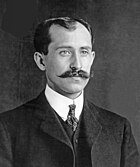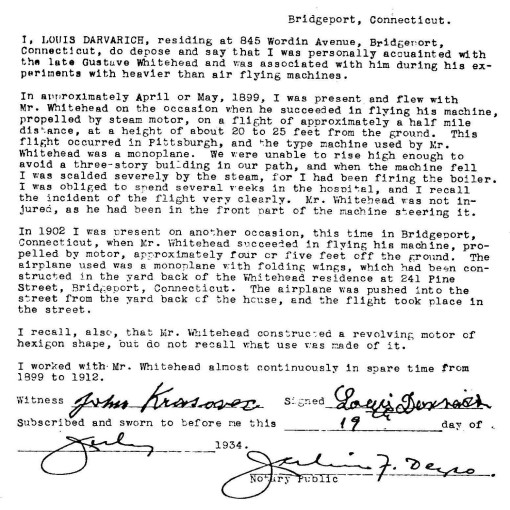Every month, SciAm has a page with a summary of articles from 50, 100, & 150 years ago. The February 2014 issue has an article relating to a Wright Brothers patent granted in 1914.
There had been many previous developments using gliders & catapult launched aircraft, but until the Wright Brothers no heavier than air device had successfully demonstrated powered flight.
It reminds me of asking my father circa 1940 why the Wright Brothers plane was in a British museum rather than an American one. It has since been returned for display in the USA (I think at the Franklin Institute in Philadelphia). He said that it was donated to the British museum due to erroneous claims by either the US army, Langley, or both.
My father was born circa 1880 & was a successful nationally known engineer by 1910. He did not remember whether Langley backed the army claims. His account of the controversy was as follows.
Samuel Pierpont Langley was a competent & successful astronomer, physicist, & inventor. He tried to develop a powered aircraft. His wing design was upside down compared to the Wright Brothers wing, which was the correct design. Langley envisioned the wing as skipping like a flat stone thrown across a still pond.
The US Army backed Langley who was trying to develop the first powered flying device other than balloons & blimps (which relied on being less dense than air). He also told me that there were many erroneous accounts published relating to the Wright/Langley controversy.
After the successful Wright Brothers flight either the army, Langley, or both claimed that the Langley plane had been successful prior to the Wright Brothers flight, but for some reason (security?) no story of the flight had been published.
The Wright Brothers challenged that claim, contending that a plane using the Langley airfoil could not fly. The army (perhaps with approval from Langley) demonstrated a successful aircraft.
The wright brothers pointed out that the airfoil used in the successful demonstration was based on the Wright brothers design, not the Langley design. They further cited an article published after the date claimed for the alleged flight, which described the army aircraft as using the erroneous Langley airfoil & intended for use in test flights.
The 1914 patent vindicated the Wright brothers, who had previously donated their airplane to a British museum.
There had been many previous developments using gliders & catapult launched aircraft, but until the Wright Brothers no heavier than air device had successfully demonstrated powered flight.
It reminds me of asking my father circa 1940 why the Wright Brothers plane was in a British museum rather than an American one. It has since been returned for display in the USA (I think at the Franklin Institute in Philadelphia). He said that it was donated to the British museum due to erroneous claims by either the US army, Langley, or both.
My father was born circa 1880 & was a successful nationally known engineer by 1910. He did not remember whether Langley backed the army claims. His account of the controversy was as follows.
Samuel Pierpont Langley was a competent & successful astronomer, physicist, & inventor. He tried to develop a powered aircraft. His wing design was upside down compared to the Wright Brothers wing, which was the correct design. Langley envisioned the wing as skipping like a flat stone thrown across a still pond.
The US Army backed Langley who was trying to develop the first powered flying device other than balloons & blimps (which relied on being less dense than air). He also told me that there were many erroneous accounts published relating to the Wright/Langley controversy.
After the successful Wright Brothers flight either the army, Langley, or both claimed that the Langley plane had been successful prior to the Wright Brothers flight, but for some reason (security?) no story of the flight had been published.
The Wright Brothers challenged that claim, contending that a plane using the Langley airfoil could not fly. The army (perhaps with approval from Langley) demonstrated a successful aircraft.
The wright brothers pointed out that the airfoil used in the successful demonstration was based on the Wright brothers design, not the Langley design. They further cited an article published after the date claimed for the alleged flight, which described the army aircraft as using the erroneous Langley airfoil & intended for use in test flights.
The 1914 patent vindicated the Wright brothers, who had previously donated their airplane to a British museum.








